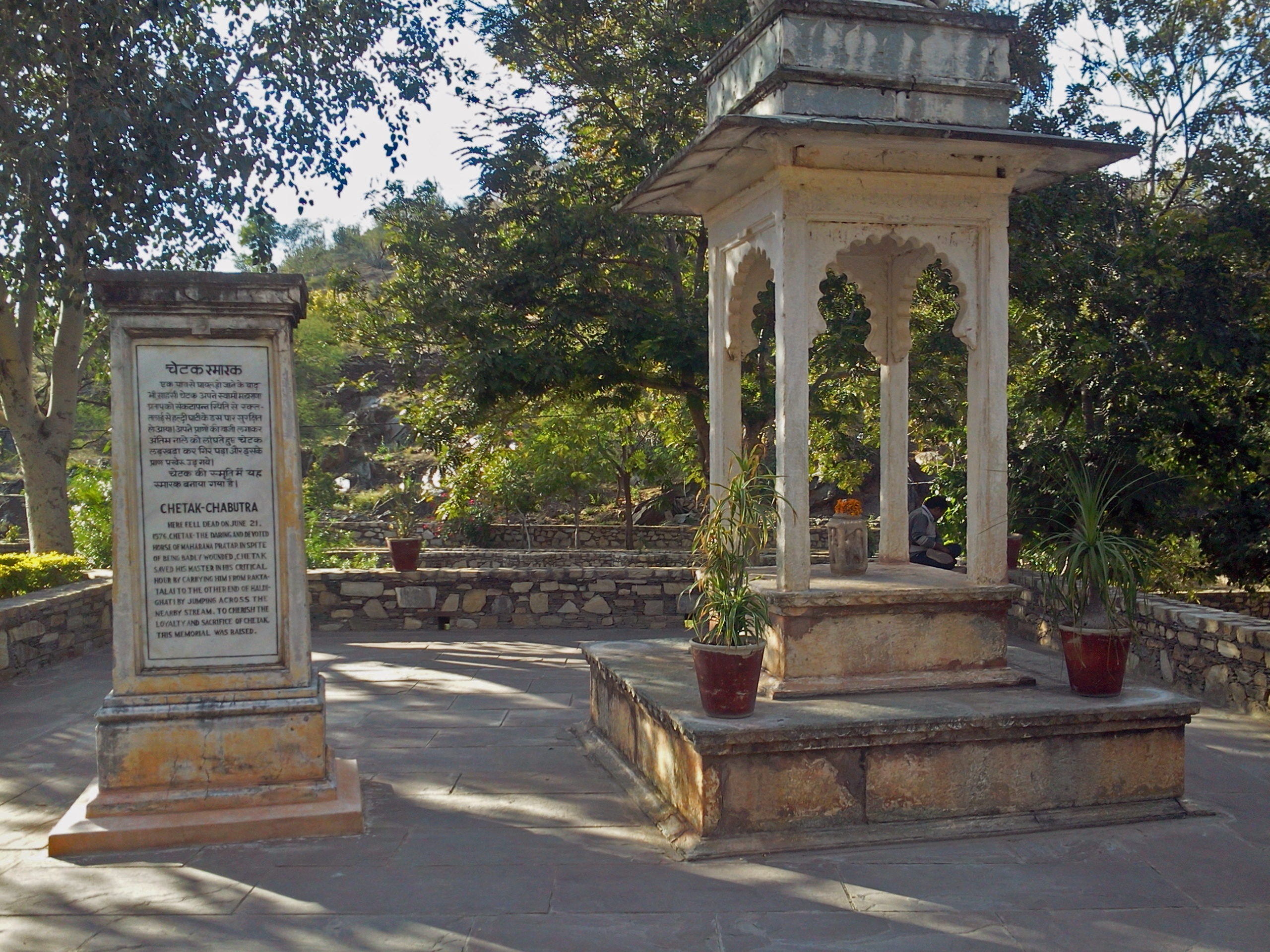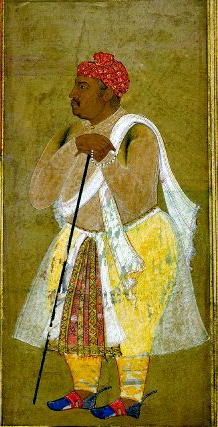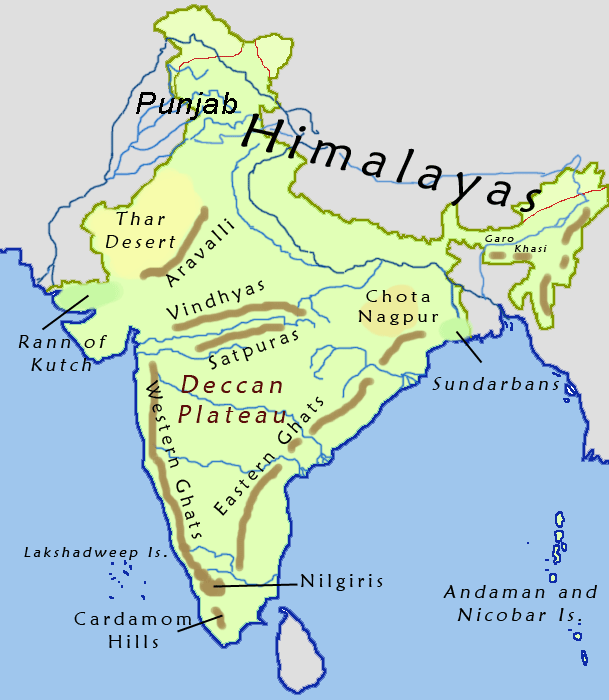|
Haldighati
Haldighati is a historical mountain pass between Khamnore and Balicha village situated at Aravalli Range of Rajasthan in western India which connects Rajsamand district, Rajsamand and Udaipur district, Udaipur districts. Haldighati also known as Haldighati Darra.The pass is located at a distance of 44 kilometres from Udaipur, Rajasthan, Udaipur and 367 kilometres from Jaipur. The name 'Haldighati' is believed to have originated from the turmeric-coloured yellow soil of the area. (Turmeric is ''haldi'' in Hindi). History The mountain pass is a significant historical location. Rakt Talai in Khamnore is the site of the Battle of Haldighati, which took place in 18 June 1576 between of the Udaipur State, Kingdom of Mewar and the Army of the Mughal Empire, Mughal Army led by Kunwar Man Singh. Maharana Pratap led the armed forces of Mewar against the Mughals who fought under the command of Mughal emperors, Mughal emperor Akbar, Akbar's general Man Singh I of Amber, India, Amber. Mem ... [...More Info...] [...Related Items...] OR: [Wikipedia] [Google] [Baidu] |
Battle Of Haldighati
The battle of Haldighati was fought on 18 June 1576 between the Mewar forces led by Maharana Pratap, and the Mughal forces led by Man Singh I of Amber. The Mughals emerged victorious after inflicting significant casualties on Mewari forces, though they failed to capture Pratap, who reluctantly retreated persuaded by his fellow commanders. The siege of Chittorgarh in 1568 had led to the loss of the fertile eastern belt of Mewar to the Mughals. However, the rest of the wooded and hilly kingdom was still under the control of the Sisodias. Akbar was intent on securing a stable route to Gujarat through Mewar; when Pratap Singh was crowned king (Rana) in 1572, Akbar sent a number of envoys entreating the Rana to become a vassal like many other Rajput leaders in the region. However, Pratap refused to enter into a treaty, which led to the battle. The site of the battle was a narrow mountain pass at Haldighati near Gogunda in Rajasthan. Sources differ on the strength of the res ... [...More Info...] [...Related Items...] OR: [Wikipedia] [Google] [Baidu] |
Maharana Pratap
Pratap Singh I (9 May 1540 – 19 January 1597), popularly known as Maharana Pratap (), was king of the Kingdom of Mewar, in north-western India in the present-day state of Rajasthan, from 1572 until his death in 1597. He is notable for leading the Rajput confederacy, Rajput resistance against the expansionist policy of the Mughal Emperor Akbar including the battle of Haldighati and the battle of Dewair. Early life and accession Maharana Pratap was born to Udai Singh II of Udaipur State, Mewar and Jaiwanta Bai in 1540, the year in which Udai Singh ascended to the throne after defeating Vanvir singh, Vanvir Singh. His younger brothers were Shakti Singh (16th century Indian noble), Shakti Singh, Vikram Singh and Jagmal Singh. Pratap also had two stepsisters: Chand Kanwar and Man Kanwar. His chief consort was Ajabde, Ajabde Bai Punwar of Bijolia. Their eldest son was Amar Singh I. He belonged to the royal family of Mewar. After the death of Udai Singh in 1572, Rani Dheer Bai Bh ... [...More Info...] [...Related Items...] OR: [Wikipedia] [Google] [Baidu] |
Chetak (horse)
Chetak or Cetak is the name given in traditional literature to the horse ridden by Maharana Pratap at the Battle of Haldighati, fought on 18 June 1576 at Haldighati, in the Aravalli Mountains of Rajasthan, in western India. The story Historical sources do not name the horse ridden by Maharana Pratap at the Battle of Haldighati on 18 June 1576, nor do they attribute any unusual feat or achievement to it. According to tradition, the horse was called Chetak. Although wounded, Chetak carried Pratap safely away from the battle, but then died of his wounds. The story is recounted in court poems of Mewar from the seventeenth century onwards. The horse is first named Cetak in an eighteenth-century ballad, ''Khummana-Raso''. The story was published in 1829 by Lieutenant-Colonel James Tod, a colonial officer who had been political officer to the Mewari court, in the first volume of his ''Annals and Antiquities of Rajast'han or the Central and Western Rajpoot States of India''. ... [...More Info...] [...Related Items...] OR: [Wikipedia] [Google] [Baidu] |
Udaipur, Rajasthan
Udaipur (Hindi: , ) (ISO 15919: ''Udayapura'') is a city in the north-western Indian state of Rajasthan, about south of the state capital Jaipur. It serves as the administrative headquarters of Udaipur district. It is the historic capital of the kingdom of Mewar in the former Rajputana Agency. It was founded in 1559 by Udai Singh II of the Sisodia clan of Rajputs, when he shifted his capital from the city of Chittorgarh to Udaipur after Chittorgarh was besieged by Akbar. It remained as the capital city till 1818 when Mewar became a British princely state, and thereafter the Mewar province became a part of Rajasthan when India gained independence in 1947. It is also known as the ''City of Lakes,'' as it is surrounded by five major artificial lakes. The city is located in the southernmost part of Rajasthan, near the Gujarat border. To its west is the Aravali Range, which separates it from the Thar Desert. It is placed close to the median point between two major Indian metro ... [...More Info...] [...Related Items...] OR: [Wikipedia] [Google] [Baidu] |
Man Singh I
Mirza Raja Man Singh I (21 December 1550 – 6 July 1614) was the 24th Raja, Kachawaha Rajput ruler of the Kingdom of Amber from 1589 to 1614. He also served as the foremost imperial Subahdar of Bihar Subah from 1587 to 1594, then for Bengal Subah for three terms from 1595 to 1606 and the Subahdar of Kabul Subah from 1585 to 1586. He served in the imperial Mughal Army under Emperor Akbar. Man Singh fought sixty-seven important battles in Kabul, Balkh, Bukhara, Bengal and Central and Southern India. He was well versed in the battle tactics of both the Rajputs as well as the Mughals. He is commonly considered to be one of the Navaratnas, or the nine (''nava'') gems (''ratna'') of the royal court of Akbar. Early life of Man Singh I He was the son of Raja Bhagwant Das and his wife Bhagawati of Amer. He was born on Sunday, 21 December 1550. Initially known as ''Kunwar'' (prince), Man Singh received the title of ''Mirza (noble), Mirza'' or ''Raja'' (King) and the rank ''Mansab ... [...More Info...] [...Related Items...] OR: [Wikipedia] [Google] [Baidu] |
Udaipur State
The Kingdom of Mewar was an independent Hindu Monarchy, kingdom that existed in the Rajputana region of the Indian subcontinent and later became a dominant state in medieval India. The kingdom was initially founded and ruled by the Guhila dynasty, followed by it's cadet branch, the Sisodia dynasty, Sisodia Dynasty. The earliest kingdom was centered around the south-central part of Rajasthan, state of India. It was bordered by the Aravali Range to the northwest, Ajmer region, Ajmer to the north, Gujarat, Vagad and Malwa regions to the south and the Hadoti region to the east. Mewar rose to prominence in the reign of Bappa Rawal (7th century AD) known for his involvement in thwarting Umayyad campaigns in India, Arab incursions in Indian subcontinent, India. Over time, It became vassal to Pratihara dynasty, Imperial Pratihara, Paramara dynasty, Paramaras and then to Chahamanas of Shakambhari, Chahamanas. In the early 10th century, Mewar emerged as an independent state, actively b ... [...More Info...] [...Related Items...] OR: [Wikipedia] [Google] [Baidu] |
Rajsamand District
Rajsamand District is a district of the state of Rajasthan in western India. The city of Rajsamand is the district headquarters. The district was constituted on 10 April 1991 from Udaipur district by carving out 7 tehsils - Bhim, Deogarh, Amet, Kumbhalgarh, Rajsamand, Nathdwara, and Railmagra. Geography The district has an area of 4,768 km2. The Aravalli Range forms the northwestern boundary of the district, across which lies Pali District. Beawar District lies to the north, Bhilwara District to the northeast and east, Chittorgarh District to the southeast, and Udaipur District to the south. The district lies in the watershed of the Banas River and its tributaries. Some other rivers are: Ari, Gomati, Chandrabhaga Demographics According to the 2011 census Rajsamand district has a population of 1,156,597, roughly equal to the nation of Timor-Leste or the US state of Rhode Island. This gives it a ranking of 405th in India (out of a total of 640). The distri ... [...More Info...] [...Related Items...] OR: [Wikipedia] [Google] [Baidu] |
Army Of The Mughal Empire
The army of the Mughal Empire was the force by which the Mughal emperors established their empire in the 16th century and expanded it to its greatest extent at the beginning of the 18th century. Although its origins, like the Mughals themselves, were in the cavalry-based armies of central Asia, its essential form and structure was established by the empire's third emperor, Akbar. The regular forces were mainly recruited and fielded by '' Mansabdar'' officers. During the 17th century, the Mughal empire possessed the largest military on earth, with its strength numbering 911,400-4,039,097 infantry and 342,696 cavalry. Alternatively, according to the census by Abul Fazl, the size of the army was roughly about 4.4 million, with less than half a million trained as cavalry; and modern India historians suggest there were 26 million personnel. The Mughals were considered a dominant military force in India, employing their superior engineering to military affairs and logistic mastery. ... [...More Info...] [...Related Items...] OR: [Wikipedia] [Google] [Baidu] |
Akbar
Akbar (Jalal-ud-din Muhammad Akbar, – ), popularly known as Akbar the Great, was the third Mughal emperor, who reigned from 1556 to 1605. Akbar succeeded his father, Humayun, under a regent, Bairam Khan, who helped the young emperor expand and consolidate Mughal domains in the Indian subcontinent. He is generally considered one of the greatest emperors in Indian history and led a successful campaign to unify the various kingdoms of '' Hindūstān'' or India proper. Quote: "Akbar, The greatest Mughal emperor of India." Akbar gradually enlarged the Mughal Empire to include much of the Indian subcontinent through Mughal military, political, cultural, and economic dominance. To unify the vast Mughal state, Akbar established a centralised system of administration and adopted a policy of conciliating conquered rulers through marriage and diplomacy. To preserve peace and order in a religiously and culturally diverse empire, he adopted policies that won him the support of his no ... [...More Info...] [...Related Items...] OR: [Wikipedia] [Google] [Baidu] |
Chetak Smarak
Chetak Smarak, also called Chetak Samadhi, is a memorial to Maharana Pratap's famed steed Chetak, in the Indian state of Rajasthan. The horse died of battle wounds after helping the Rana effect a miraculous escape from the Battle of Haldighati. The memorial is said to have been built at the spot that Chetak died. It is situated in the Aravalli hills in the lake district of Rajsamand, at the village of Balicha. In 2003, the shrine was declared a Monument of National Importance in Rajasthan by the Archaeological Survey of India. It is an interesting little place with an old museum dedicated to the battle, and a new one coming up close by. It can be reached easily by road, about 4 km from the temple town of Nathdwara Nathdwara is a city in the Rajsamand district of the state of Rajasthan, India. It is located in the Aravalli hills, on the banks of the Banas River and is 48 kilometres north-east of Udaipur. Shrinathji, is a swarup of lord Krishna whic .... Refer ... [...More Info...] [...Related Items...] OR: [Wikipedia] [Google] [Baidu] |
Chetak Samadhi
Chetak Smarak, also called Chetak Samadhi, is a memorial to Maharana Pratap's famed steed Chetak, in the Indian state of Rajasthan. The horse died of battle wounds after helping the Rana effect a miraculous escape from the Battle of Haldighati. The memorial is said to have been built at the spot that Chetak died. It is situated in the Aravalli hills in the lake district of Rajsamand, at the village of Balicha. In 2003, the shrine was declared a Monument of National Importance in Rajasthan by the Archaeological Survey of India. It is an interesting little place with an old museum dedicated to the battle, and a new one coming up close by. It can be reached easily by road, about 4 km from the temple town of Nathdwara Nathdwara is a city in the Rajsamand district of the state of Rajasthan, India. It is located in the Aravalli hills, on the banks of the Banas River and is 48 kilometres north-east of Udaipur. Shrinathji, is a swarup of lord Krishna whic .... Referen ... [...More Info...] [...Related Items...] OR: [Wikipedia] [Google] [Baidu] |
Aravalli Range
The Aravalli Range (also spelled ''Aravali'') is a mountain range in North India, Northern-Western India, running approximately in a south-west direction, starting near Delhi, passing through southern Haryana and Rajasthan, and ending in Ahmedabad, Gujarat. The highest peak is Guru Shikhar on Mount Abu at . The Aravalli Range is one of the oldest geological features on Earth, dating to the Proterozoic era. The Aravalli Range is rich in natural resources and serves to check the growth of the western desert. Etymology Aravalli, a composite Sanskrit word from the roots ''"ara"'' and ''"vali"'', literally means the ''"line of peaks"''. Natural history Geology The Aravalli Range, an eroded stub of ancient mountains, is believed to be the oldest range of fold mountains in India.Roy, A. B. (1990). Evolution of the Precambrian crust of the Aravalli Range. Developments in Precambrian Geology, 8, 327–347. The natural history of the Aravalli Range dates back to times when ... [...More Info...] [...Related Items...] OR: [Wikipedia] [Google] [Baidu] |






